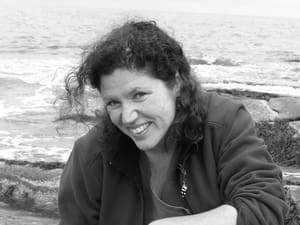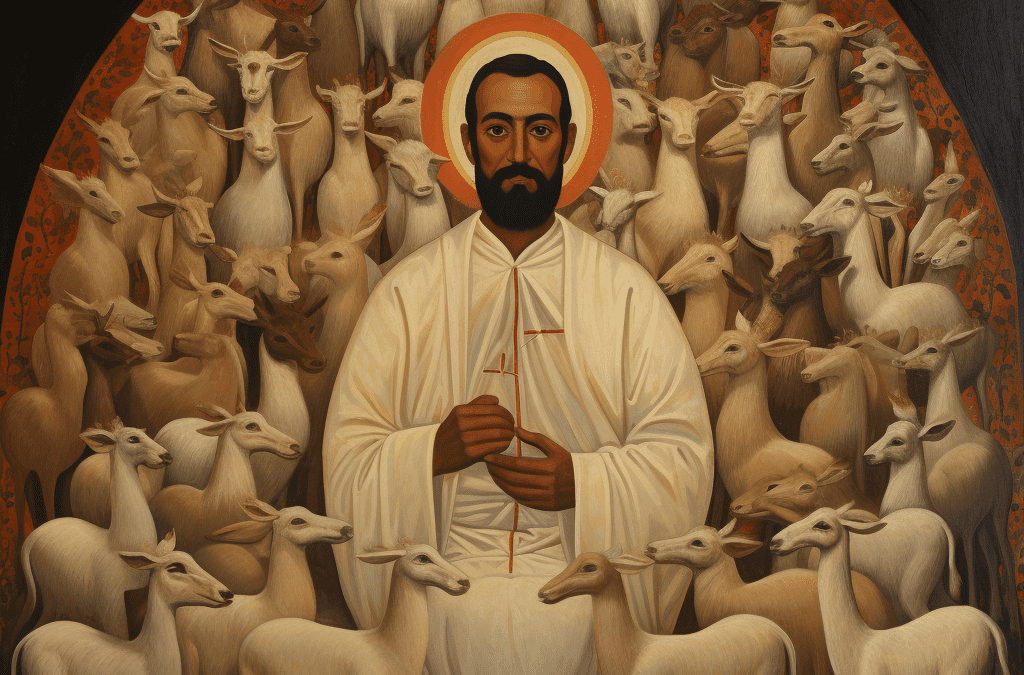Inspired by the interviews in the Paris Review and Bomb magazine, “The Questions” in Sports Illustrated, and the regular interviews on the blogs of Tom Peters and Guy Kawasaki, Comment has asked a diverse group of mentors for their stories.
Comment: How would you explain what you do to an interested nine-year-old child?
Denise Frame Harlan: I write stories from real life. If you’ve ever heard a good “ghost story,” you might recall how the plot builds, one line after another. Perhaps you could be frightened all over again by remembering the chilling end. While I could tell you a pretty-good story any day of the week, if I’m really writing, each sentence builds on the last until you are drawn in. Like a well-told tale, you might remember the impact of that story years from now. That’s what good writing does.
 |
Comment: What first drew you to this work?
DFH: “Sticky” memory and curiosity-neither trait lets memories just “be.”
I’m also a chronic letter-writer, emailer, and storyteller. Often I see a story spinning out as I tell it to someone else.
Comment: As a novice, what were your most valuable learning experiences?
DFH: My first writing instructor told me I’ve never been a novice writer! But I’d argue that I’m still a novice in the writing profession. I’ve been writing for four years.
I forced an opening into my schedule. I claimed two years as “a transition time” when my youngest child entered half-day preschool. I wrote every possible moment. I’ve extended my transition, against all rational claims on my time and energy. As a mom, I can’t say how challenging it is to put aside thoughts of “usefulness” to others, but writing demands solitude, and I doggedly protect mine. I know my husband and I will need to reassess time and finances after I graduate, but for now, I’m glad to “just write.”
I put my writing in public. A long-distance friend suggested I start a blog. When I asked him to define “blog,” he responded “a commitment to write for others,” and he provided a link. I penned a bimonthly column for the CCO, my former employer.
With no experience, I had no reason to believe I’d be any good at writing for others, but rave responses followed—and not just any rave responses, but encouragement from Byron Borger (Hearts & Minds Books), Amy Maczuzak (CCO publications), Kirstin and Rob Vander Giessen-Reitsma from catapult magazine. I started strategizing stories for publication. A blog-reader-friend phoned out of the blue and asked me to moderate forums for More.com. More is a glossy, stylish, smart magazine for women over 40, and the online forums require me to translate myself for a non-religious, non-academic audience of intelligent women. It’s a perfect complement to my academic and literary pursuits.
I found professional mentors. I started writing at age 42—I don’t have time for enormous mistakes. I knew when I was at the “end” of my native skills. While a masters degree is not necessary to write, an MFA provides a circle of writers and a setting for honest criticism. In addition, I’ve attended sessions with Luci Shaw, David James Duncan, Patricia Hampl, Brett Lott, and program director Greg Wolfe of Image journal—I feel as though I’m being put through my writing paces. Grad school is a joy. It makes me—and my family—take my writing work seriously.
 |
Comment: From what sources do you draw inspiration for your work?
DFH: “Audience” is the motivation and direction for my writing. My blog is for one audience. My magazine work is another, and the hand-crafting community is another. I still often start with a letter to one person. I lived in a variety of Christian communities for nearly ten years, from college dorms to special interest houses, and I miss that kind of live-in connection with people. Writing is the ultimate act of hospitality for me: it’s a different kind of connection, and it’s much richer for me. My hope is to build a temporary shelter for people, in a story. Along the way, I build a shelter for myself—writing is a form of prayer and reflection.
A second inspiration is great reading. I love clean, elegant writing, though I tend to meander, and I love writing that is drop-dead honest. I am wild about fiction, though I can’t write it myself. I love a book that is edited to the barest bone of story. I’m trying to learn to do that.
I also love magazines, the more beautiful the better: I’ve mentioned Image and More, but I also love Orion, Books & Culture, and knitting magazines.
Comment: What rituals and habits structure your workday?
DFH: At best, I make breakfast for my family and see them out the door. Then I make a good breakfast and dig into my writing work. At best I break for a walk in mid-morning. At worst, I snag myself in email chores, forget all self-care and wonder where my morning has gone.
At best I do not touch my laptop after my children get home from school, unless they are deep in their own projects and my deadlines are looming. But sometimes I’m merged with my beloved rectangular hunk of metal, indefinitely. It’s not pretty.
Comment: What are your favorite tools?
DFH: Writers often ask whether I prefer keyboard or paper: I love both. Paper and laptop do different things. My children’s teachers tell me handwriting flows through the entire arm, from the heart, and I believe it. I love to write on real artifacts, paper placemats, napkins, bank slips. Then I lose the slips and they show up like treasures, someplace else entirely—I love that.
My journal: Gold Fibre spiral-bound Project Planner. The open left column of each page allows me to jot annoying distractions and keep moving. When I open a new journal, I draw a title-plate on the first page of a fresh journal, then inscribe story ideas inside the cover. The second page is my to-do list. Inside the back cover I note addresses and phone numbers I might need. A butterfly-clip holds bookmarks and (do I admit this?) two treasured letters of recommendation, from writers I admire. When I run out of faith in my work, I reread them.
Writing implements: Z-Grip ballpoint for speed, a fine felt-tip for precision, pencil offers a lovely scratchiness, calligraphy pen if I’m really needing a change.
On my MacBook Pro, I love Scrivener to tame multiple chapters and versions of the same piece of writing. Having said that, I’d be a better editor of my work if I often returned to scissors and three-by-five-inch cards, spread out on my floor, which is the way I wrote in the technologically dark ages of my college years.
Comment: Tell us about a project that delighted you.
DFH: For my first freelance piece, I placed a dozen photos of my daughter’s yarn-spinning birthday party alongside a step-by-step approach to party-planning. I made money from my child’s birthday party—the irony is all pleasure, and the article in Interweave’s Spin-Off is just beautiful.
Another project that delights me. I’ve been writing about a sailing trip to The Dry Salvages, with T. S. Eliot’s Four Quartets in my pocket. My sailor, a dear old friend, turns out to be nearly blind. It becomes clear over the course of the day that my first sailing trip will be Dan’s last sail as captain: his eyesight puts us and his gorgeous racing boat in danger.
My first draft conveyed only facts, and a friend sent me back to rewrite it, again and again. The story nagged me for months, until I started journaling about how hard this geography is on my friendships, and on me, and soon I was writing on mortality—which is the basis of Eliot’s Four Quartets to begin with! “Halcyon Day” became another story entirely.
I’m still working on that story.
Comment: How do you plan your work?
DFH: It’s less a plan and more a rumination. I make room, nurse questions and curiosities, and try to care for my body and my solitude. It’s more a plan to not be run over by the day-to-day necessities of life.
Comment: How does your work connect to other aspects of your life?
DFH: I’m a memoirist—ultimately I write about myself and my life. Even when I try to write otherwise, it still ends up being about me and my life. As we say in writing, “It’s all material.”
Graduate school has been challenging because I sometimes disappear from the physical world too much—I forget to eat, to exercise, to look at this beautiful place where I live, and I treat my family as though I’m sleepwalking. I can’t throw away the laptop, but I remind myself, here, in print, that I need to live in this world in a very conscious way, in order to continue to write.
In some ways I write because I believe my whole life connects into one story, graciously given to me. My task is to find out how all the fragments weave together, and how my story is woven to others. It’s the best task on earth. I can’t wait to wake up tomorrow and start writing all over again.

